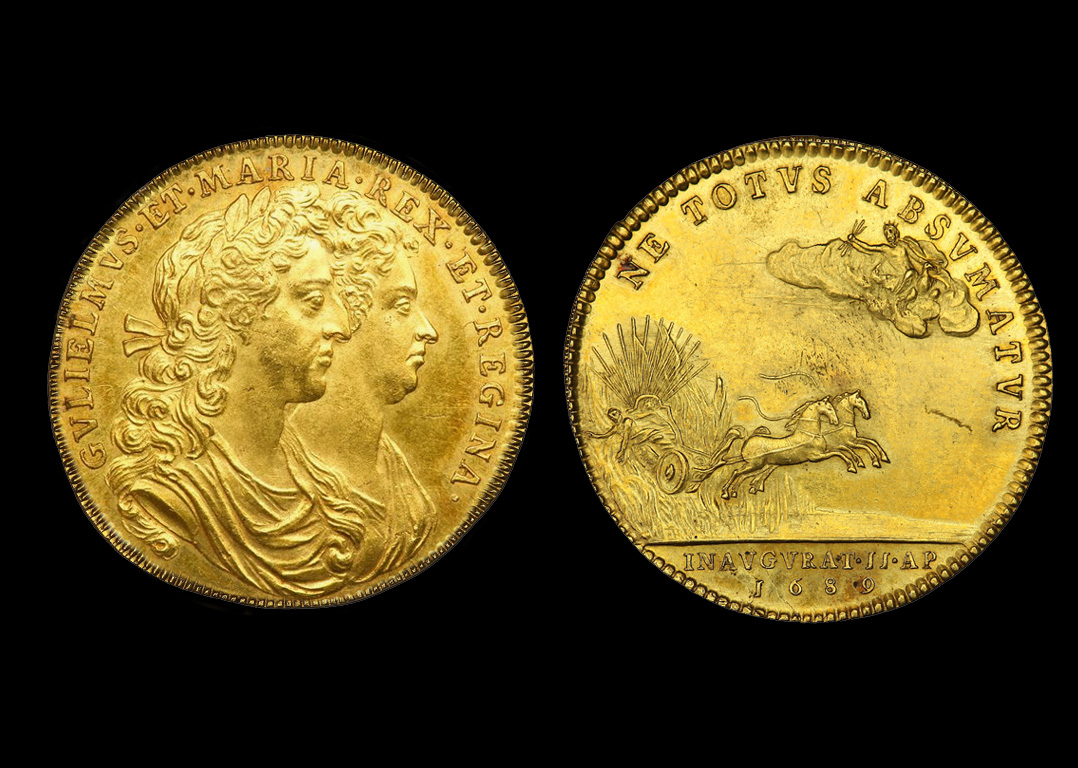
John Roettiers, Coronation Medal for William III and Mary II (1689). © Trustees of the British Museum.
This coronation medal was designed and crafted by John Roettiers (1631-1703), the chief engraver to the Royal Mint. Roettiers had previously made the new Great Seal in 1666. Samuel Pepys described his medals as ‘some of the finest pieces of embossed work, that I ever did see in my life’, and John Evelyn knew him as ‘that excellent engraver […] who emulates even the ancients in stone and metal’. This gold medal was produced for distribution at the coronation of William III (1650-1702) and Mary II (1662-1694), in 1689, where it was given to MPs and peers who swore fealty to the new regime.
The design is interesting in a number of ways. Firstly, the obverse shows a conjoined portrait of William and Mary, indicating their status as dual sovereigns. William is portrayed in classical dress, akin to a Roman emperor. The reverse is more allegorical. It portrays a scene from classical mythology. From a cloud Jupiter hurls a thunderbolt at Phaeton, who falls from his chariot. Jupiter represents William. Phaeton, on the other hand, has lost control of the reigns of power and thus stands in for James II (1633-1701), who had fled the country after William’s invasion in November 1688. The image thus provides a neat allegory for the Glorious Revolution.
In other ways, though, the design was unsuccessful. Writers hostile to the new regime reinterpreted the design according to their own political outlook. Hence one tendentious pamphleteer suggested that ‘the people knowing that this king and queen had, not by permission, but by violence, ascended their father’s throne, would look upon this as his chariot which they drive, and interpret Jupiter’s thunderbolt as a sign of some judgement of God’.
When a later Master of the Royal Mint, Isaac Newton, came to design Queen Anne’s coronation medal, he deliberately alluded to Roettier’s design. Newton’s intention was to suggest that Anne succeeded by the same revolution principles as William and Mary, not by hereditary right. But he also observed that William and Mary’s coronation medal had been ‘too thin’. Newton decided to make Anne’s coronation medals thicker, to ‘take the impression better’.